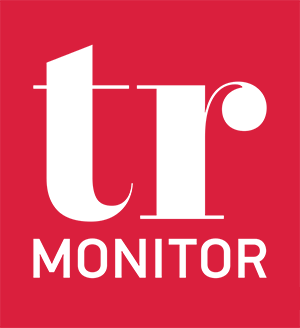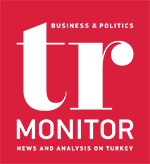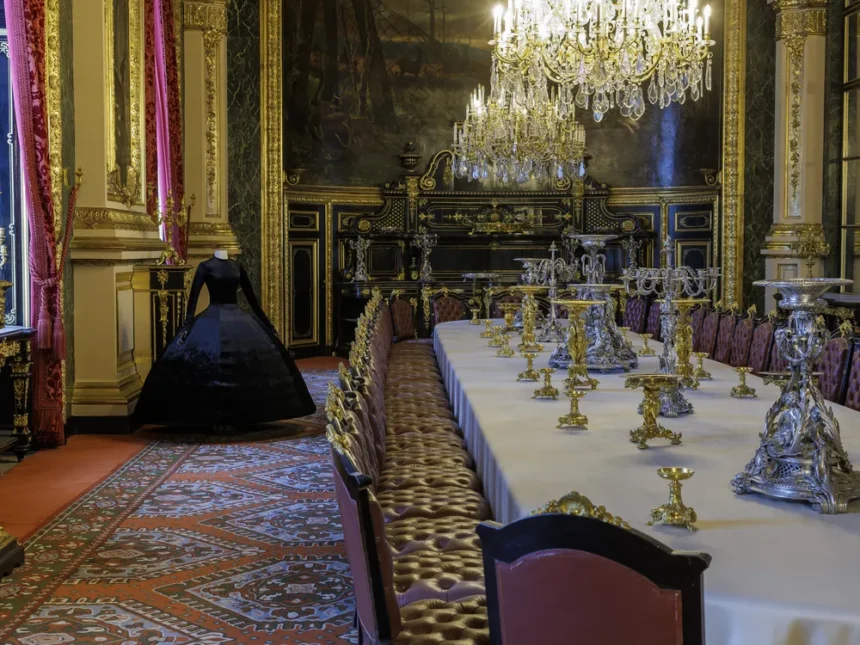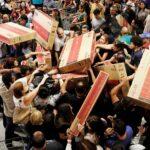Antoine Robert
A Historic First at the Louvre
For the first time in 231 years, the Louvre is dedicating an exhibition to haute couture. Until July 21, Louvre Couture: Art Objects, Fashion Objects takes over the halls of the world’s largest museum. The exhibition is held on the first floor of the Richelieu Wing, within the Department of Decorative Arts. This section is far from the crowded, bustling corridors of the Denon Wing, where tourists flock to see Leonardo da Vinci’s Mona Lisa. Instead, the museum presents a journey through craftsmanship from the Middle Ages to the 19th century. Here, there are no paintings, but rather statuettes, liturgical objects, furniture, jewelry, accessories, costumes, weapons, tapestries, books, and ceramics. It is within this atypical setting that the exhibition unfolds. Make no mistake this is indeed a fashion exhibition. The Parisian museum presents seventy silhouettes and around thirty accessories, lent by 45 luxury houses and iconic designers, from Chanel and Dior to Yohji Yamamoto and Iris van Herpen. Through an immersive experience, visitors are invited to explore the poetic connections between haute couture and the museum’s collections as they stroll through the department’s galleries. Thanks to the scenography by Nathalie Crinière, each room strikes a delicate balance between fashion creations and their museum surroundings. The silhouettes are not randomly placed but rather integrated into their environment. A striking example is the bright yellow brocade mini dress with golden lace trim from Versace’s Fall/Winter 2002/2003 ready-to-wear collection, whose floral bustier echoes the opulence of 18th-century interiors, harmonizing with the textiles of nearby chairs and the gilded mirror frames. Another standout piece is Balenciaga’s 3D-printed resin armor dress from the Fall/Winter 2023/2024 haute couture collection, inspired by historic armor and blending seamlessly into the room’s display of antique weaponry. This continuous dialogue between haute couture masterpieces, sculptures, ceramics and tapestries offers a fresh perspective on the deep connection between art and fashion. Many designers draw inspiration from classical art, particularly painting. Think of Vivienne Westwood’s Anglophilia evening gown (2003), inspired by François Boucher’s 1758 portrait of Madame de Pompadour, or Yves Saint Laurent’s Mondrian dress (Fall/Winter 1965), paying homage to Piet Mondrian’s cubist works. Fashion designers take cues from the vibrant colors of abstract art, the rich textures of natural materials, geometric or traditional patterns, and silhouettes from various artistic movements. Beyond aesthetics, art also inspires concepts and storytelling, adding depth and meaning to fashion collections. This fusion between art and fashion allows for the creation of pieces that are both daring and significant, reflecting our world and its many artistic expressions.
A Strategic Initiative for the Louvre
The exhibition also serves as a strategic tool for the Louvre to enhance the visitor experience. Olivier Gabet, director of the Department of Decorative Arts, explained in an interview with Le Monde that beyond celebrating the intersection of art and fashion, the exhibition is designed to redirect visitors to lesser known museum sections, often overshadowed by the iconic Sully and Denon Wings. Since early 2024, the museum has capped daily attendance at 30,000 visitors. With this restriction, the Louvre’s only way to improve visitor experience is better crowd management within the building.
While the museum has not explicitly stated this, it is evident that the exhibition also seeks to attract a younger audience or at least better engage the 41% of visitors under the age of 26. This comes as no surprise. Fashion and haute couture exhibitions in Paris have consistently drawn large crowds, especially younger audiences. For example, the Iris van Herpen retrospective at the Musée des Arts Décoratifs welcomed 370,780 visitors last season, while this year’s Dolce & Gabbana exhibition at the Grand Palais is also enjoying great success. With Louvre Couture, the Louvre achieves two goals at once: improving overall visitor experience while strengthening its appeal to younger audiences.
A Prestigious Event to Elevate the Museum’s Influence
Continuing its strategy of bridging heritage and fashion, the Louvre hosted its first-ever Grand Dîner on March 4, coinciding with Paris Fashion Week. This new take on its annual fundraising gala draws clear inspiration from New York’s Met Gala. Bringing together 350 influential figures from the worlds of fashion, film, and business, the event raised €1.4 million for the museum. This financial boost is especially welcome, as the Louvre faces major renovation projects: modernizing technical equipment, improving air conditioning for artwork preservation, and extensive construction work under the Pyramid to address crowd congestion and sound insulation issues. While the Louvre benefits greatly from this event, luxury fashion and jewelry houses also gain a powerful marketing advantage. The Grand Dîner becomes a global showcase, where brands dress the most influential guests, weaving a compelling narrative around their craftsmanship. In the digital age, celebrities and influencers amplify the event’s reach by sharing content across Instagram, TikTok, Twitter, and YouTube, maximizing brand visibility. By organizing this exceptional evening, the Louvre reaffirms its commitment to strengthening ties between fashion, heritage, and philanthropy. With its undeniable success, the Grand Dîner is poised to become a must-attend event on the Parisian cultural calendar, reflecting the museum’s evolving strategy: diversifying funding sources, enhancing its global prestige, and fostering a deeper dialogue between history, art, and contemporary creation.








